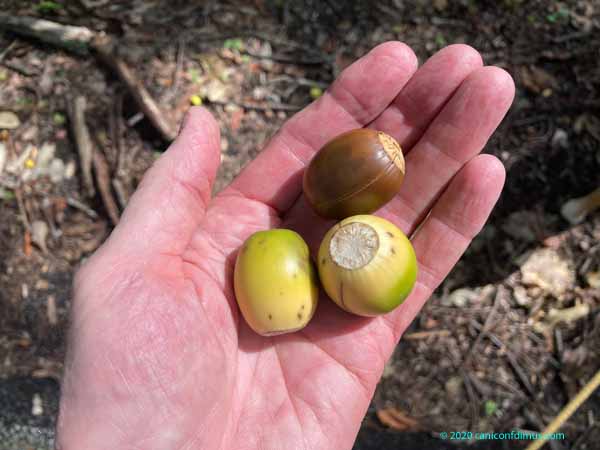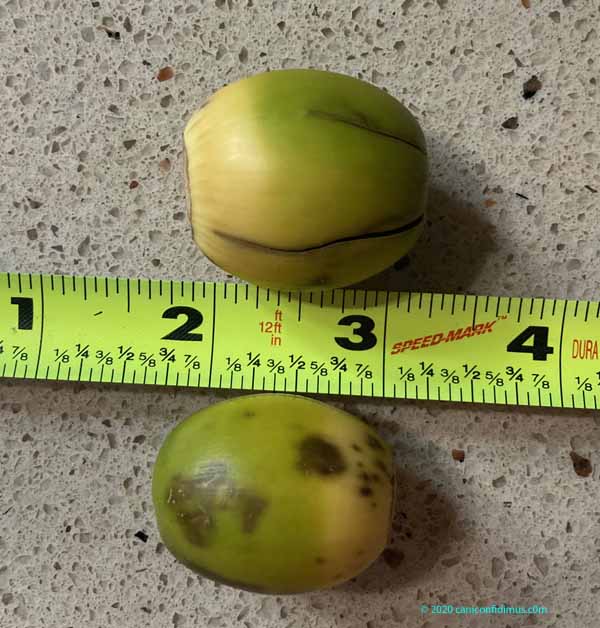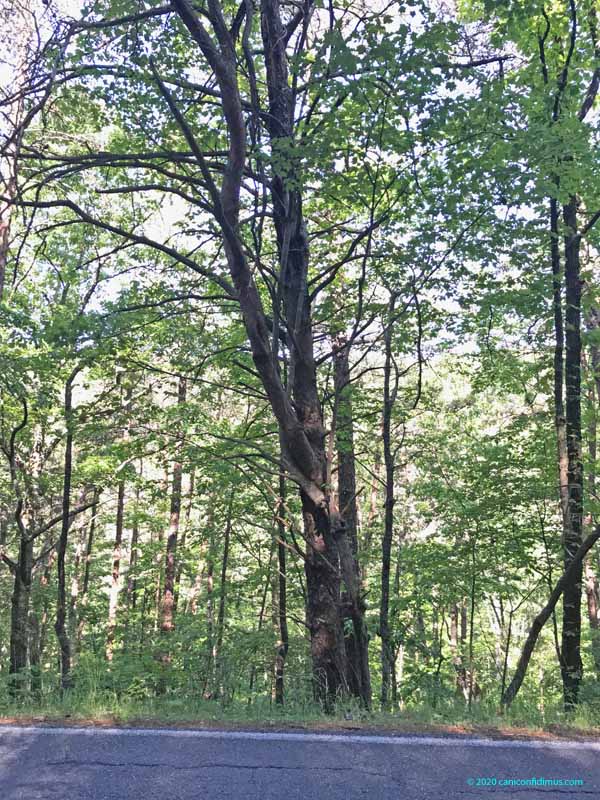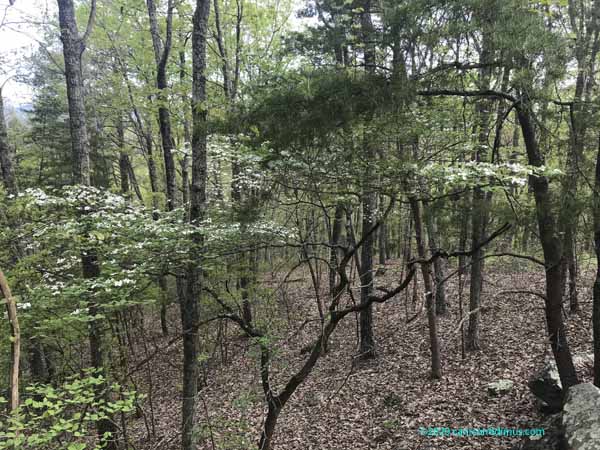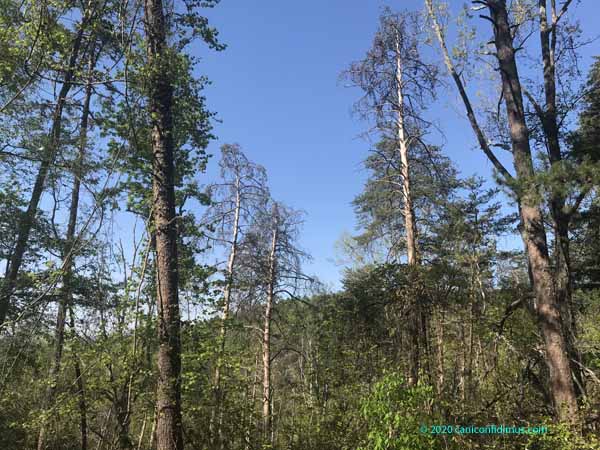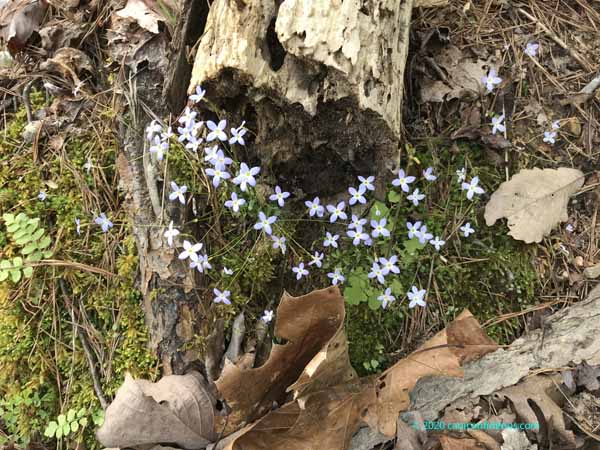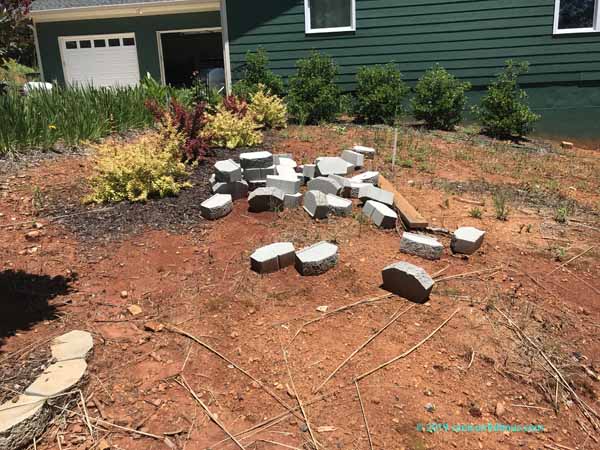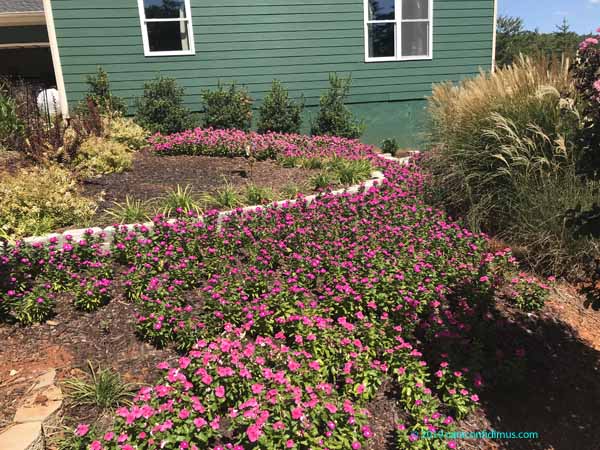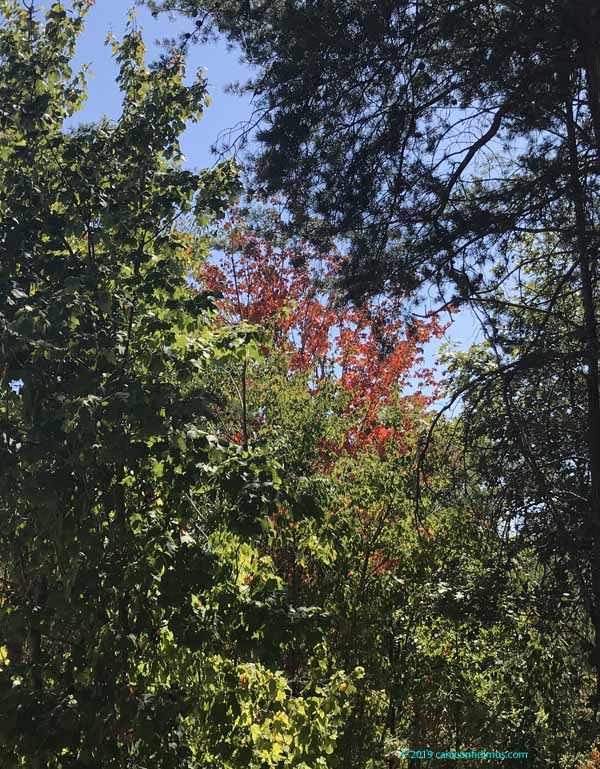Tropical Storm Zeta dropped by here early Thursday morning. It was not a good visitor. It didn’t stay long, and it tore the place up.
We woke up around 3 am to wind and rain. Leah got up around 5:30 and went into the kitchen. I heard her say, “Oh, great!” That’s when the power went off.
Zeta was predicted to bring pretty strong winds, and it did. Rome reported a peak gust of 55 mph. That was bad enough, but we had had about three inches of rain the day before, and along with the rain Zeta brought, it was enough to make the ground soggy and soft. Especially soft. Soft enough that trees fell all over North Georgia. Falling trees means, among other things, fallen power lines. Georgia Power said the storm damage was the worst in about 60 years. I checked the Georgia Power outage map for our area. It was busy.
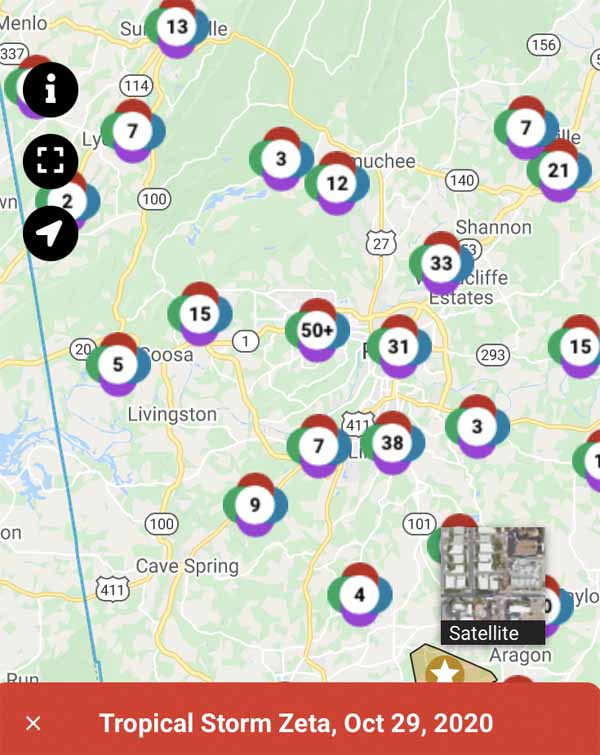
Each icon indicates a power outage in a given area. The icon just left of center, with 15 in it, is our area. Clicking on the icon brings up information on how many customers were without power. Our little mountaintop community showed 12 customers, which means every single one of us. The numbers in the icons don’t show the number of customers without power. Other icons closer to town represented up into the hundreds of customers. The total in the Georgia Power service area was around a million.
The worst power outage we have had in our 15 years up here is less than a day. Georgia Power’s estimate for restoring power is 11 pm Sunday. For us, a very long power outage is more than an inconvenience. We have a decent generator, which means we can string extension cords through the house and get some lights, the TV, and the freezer running. Unfortunately, our refrigerator is a press fit into the cabinets, so we can’t get to the power cord for it. So now we have lights and TV, but since we are on a well, we have no water. That’s a problem. So I decided to drive down to town to get some water. That’s when we ran into the next problem. Downed trees blocked Fouche Gap Road down to Huffaker Road, which is the way we get into town.
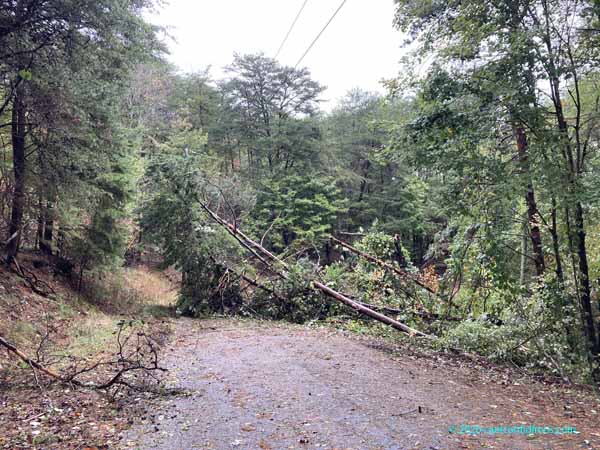
I walked the dogs down to check it out. There was a second blockage a little further down.
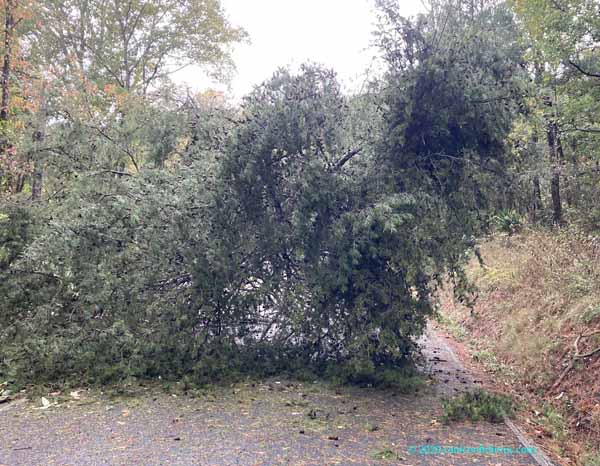
The dogs and I edged past the trees, which were hanging on power lines, something I wouldn’t have done if the power lines were live. Further down the road we ran into more downed trees, but also a county road crew that was clearing the road.
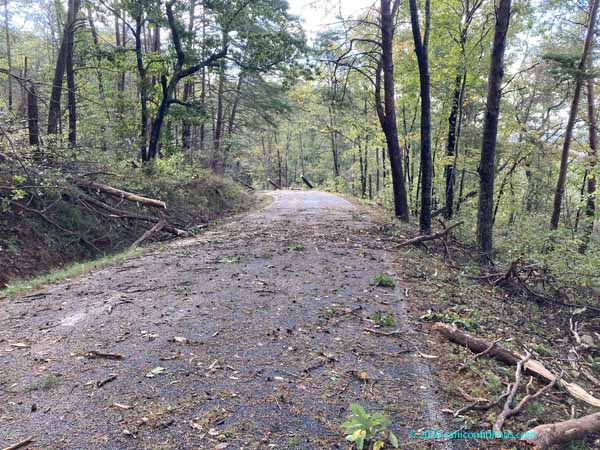

Unfortunately for us, they wouldn’t touch trees that fell on power lines.
All the broken pines smelled like a Christmas tree farm.
There is a detour that leads down the far side of the mountain into Texas Valley, west along the northern edge of the mountain, and then to Huffaker a few miles further out. That adds at least 10 miles to our trip. Unfortunately (a lot of things were unfortunate), Big Texas Valley Road was blocked by trees. There is another way out of the valley that leads to Rome’s major north-south highway, US 27. The road narrows to one lane for some distance. It also had downed power lines, but they were dangling so that we could thread our way through. We got into town, but that detour is more than 20 miles, because it ends up on the wrong end of town for us.
Friday morning I saw our neighbor John, who has a grading company. He met a friend and they cut a narrow tunnel through the first downed tree on Fouche Gap. They expected to clear both places. On Friday Leah and I decided to drive into town, so we headed down Fouche Gap to Huffaker, expecting to find both blockages cleared. The second downed tree was not cleared. I said S*%T, and not for the last time. So we turned around and decided to take a chance on the 10-mile detour instead of the 20-mile detour. It was passable, but only because residents had taken their own chainsaws to the trees and cleared just enough to get by.
We stocked up on gallon jugs of filtered water for drinking and washing (hands and dishes, not entire bodies). We have a little wet-weather spring next to our driveway that provided water for toilet flushing. By Saturday it was running fairly low. Just about the time I was finding that out a neighbor came by and said we could get water at his house. He has a generator big enough to power his well pump and most of his house. I took him up on that offer, so as of late Saturday we have almost six gallons of drinking water and five five-gallon buckets filled with toilet-flushing water.
Another neighbor got a generator that automatically shuts off the company power lead and sends power into the house. Her generator is big enough to power everything in her house. That would be nice, but that kind of setup starts at around $4000 just for a smallish generator without installation. It’s hard to justify spending that kind of money for something that happens so infrequently. On the other hand, another neighbor and her husband use EPAP machines, so they have to have power. They ended up at a hotel.
Saturday morning a power company crew cleared the two trees that were blocking out way off the town side of the mountain. That allowed me to get to a fast food place and back in a reasonable time.
So, as of now, we have some water. We have some lights. It’s going to get cool tonight and cold tomorrow night. If the power company is right, we ought to have heat in time for the coldest part of the night. And how shower. That will be nice.
